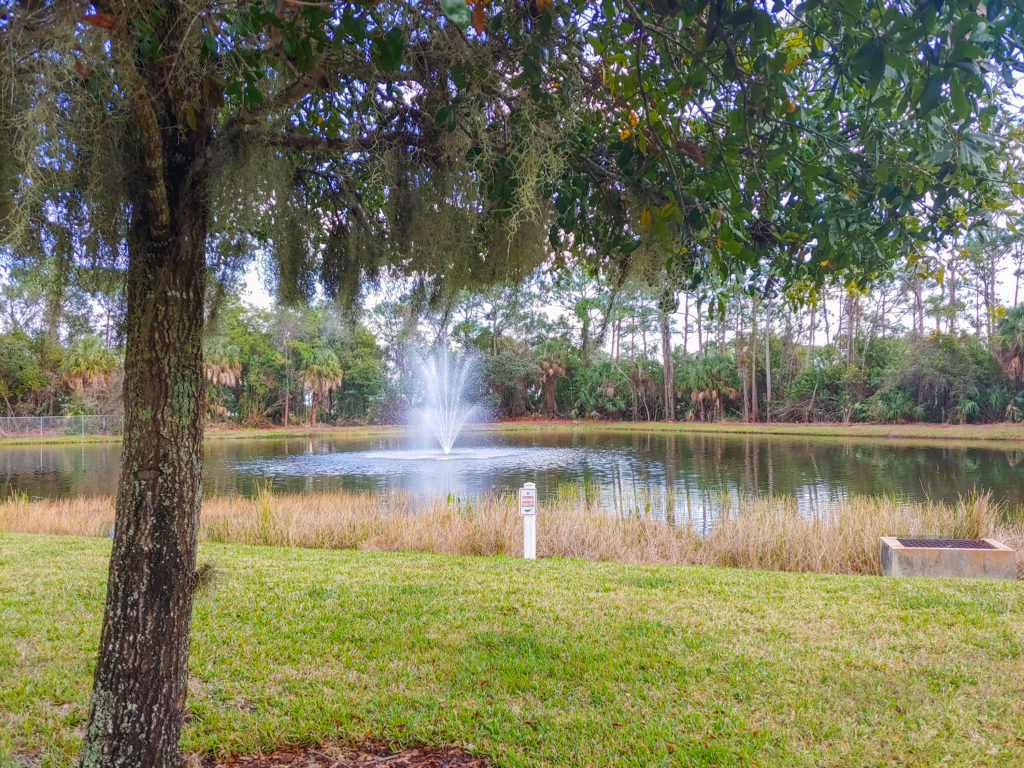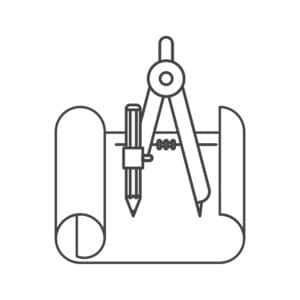Stormwater is a general term that is heard often in land development that is used to reference rainwater after the water reaches the ground during a rainfall event. You might also hear stormwater be referred to as stormwater runoff since in most cases at least a portion of stormwater will run over and off of the ground it reaches.
Stormwater management is the collective term referring to the collection, treatment, and control of stormwater runoff accordingly to local ordinances. Some common examples of a stormwater management system include a graded surface basin (where you can see the water that is managed) or a subsurface system (where you cannot see the water that is managed) within which stormwater is diverted into a stone trench or other containment system.
The following are four elements of a full stormwater management design that are common to many land development projects.
1) Stormwater Quantity Control
2) Stormwater Rate Control
3) Stormwater Infiltration
4) Stormwater Runoff Quality
Stormwater Quantity Control
One of the goals of stormwater management is to prevent adverse effects of stormwater runoff from occurring to downstream properties. These downstream properties are owned by people that would not want to see an increase in the amount of stormwater (the quantity or volume of stormwater runoff) that is the result of a new land development project.
Probably the most common cause of a stormwater quantity increase is an increase in impervious area in the post-development condition since an impervious area will absorb much less water than a pervious area such as grass or meadow.
For example, a land development project for a 5-acre site that is currently all meadow that involves two acres of new impervious area is going to generate a good amount of extra stormwater runoff volume that would most likely require the design of a stormwater management system to retain on the site the increase in runoff volume.
Something as simple as a rainwater harvesting system could be used as a credit to go towards a portion of the runoff retention volume requirement. The remaining volume requirement would have to be met through a separate and more complex stormwater management system such as an infiltration basin or a rain garden.
Advertisement
Stormwater Rate Control
In the same way that land owners that are downstream of a new land development project would not want an increase in stormwater quantity flowing onto their property, these land owners would also not want to see an increase in the rate of stormwater that would be the result of a new land development.
In addition to creating an increase in total stormwater volume, the additional impervious area that is the result of a new land development would also create an increase in the rate of flow generated. Flow rate is the amount of stormwater that passes a point over a certain period of time and is usually expressed in cubic feet per second (cfs).
The stormwater management system for a new land development would probably have to be designed to reduce the calculated post-development flow rates to pre-development conditions through some form of stormwater detention.
Stormwater Infiltration
After a significant rainfall event, a certain amount of that stormwater will infiltrate into the ground with the rest flowing over the ground to lower elevations. When the ground cover changes with a proposed development from a pervious cover such as meadow to a less pervious cover such as grass or paving, less infiltration of water into the ground will occur.
Depending on the municipality where your site is located, there could be ordinance requirements involving groundwater recharge.
Groundwater recharge is the infiltration of stormwater runoff back into the ground after rainfall events in order to make an effort to replicate pre-development conditions with regard to groundwater levels.
An example of an infiltration requirement could be having to infiltrate a volume of stormwater runoff equal to one inch of rainfall per acre of proposed impervious area.
A stormwater management system that is designed to infiltrate stormwater could likely require infiltration testing that is done by a qualified professional to provide verification that the proposed system will actually allow infiltration. If infiltration is found to be able to occur for your site, the rate of infiltration at the area of the proposed system and at the elevation where infiltration is to occur would also be determined during the field testing and then be used in the design of the system.
Related: What Is Infiltration Rate?
Stormwater Runoff Quality
The quality of the stormwater runoff after the construction of a new land development project is another thing that might have to be factored into the stormwater management design.
Much of the water that was contacting pervious surfaces such as meadow or grass in the pre-development condition would now be flowing along and off of roof areas or paved areas in the post-development condition and carrying with it certain pollutants commonly associated with these impervious areas.
In order to help prevent these pollutants from leaving your site or to reduce the amount of pollutants that leave your site during and after a rainfall event, the municipality or agency reviewing your project might require additional measures for the stormwater management design. These measures could include special devices that are added to certain storm sewer inlets of the proposed storm drainage system. These devices are designed to separate out specific pollutants in the stormwater runoff before the water enters the stormwater management system.
How Runoff Gets Collected
After the location and size of a stormwater management system is determined, a storm sewer drainage system has to be designed. The storm sewer drainage system is the series of pipes, inlets, and other associated structures that is required to capture stormwater runoff and then convey it to the stormwater management system.
Another major component of a stormwater collection system could also be the series of drainage swales that are designed to divert and carry stormwater either to the storm sewer system or directly to the stormwater management system.
Related: Storm Drainage System Design (A Guide for the Non-Professional)
What Happens After Runoff Is Collected
Once stormwater runoff is captured and conveyed to a stormwater management system, it can do one of a couple of things depending on the chosen design for the system. The runoff can either start to infiltrate into the ground, back up and remain in the stormwater management system, or immediately be slowly released through the outlet of the system.
Some stormwater management systems could be designed to manage runoff in more than one way. A rain garden is an example of a system that would collect runoff during a rainfall event, infiltrate a portion of the runoff volume into the ground, retain a portion of the runoff, and detain the remaining runoff volume by allowing the slow release of stormwater flow from the rain garden through an outlet structure.
Related: Recommendations for Rain Garden Books
The Water That Leaves the Site
Stormwater management systems that are designed to slowly release water for larger rainfall events would most likely require the design of something to control the outflow. Some commonly used ways to control stormwater outflow are riprap aprons and level spreaders.
A riprap apron is a pad consisting of riprap rock that is designed to reduce the velocity of stormwater flow from the outlet pipe of a stormwater management system.
A level spreader is something such as a stone trench that stormwater from a stormwater management system would flow into before spreading the flow over a certain width at a uniform elevation.
The use of riprap aprons and level spreaders could help to prevent erosion issues that could occur downstream of the stormwater management systems.
Advertisement
The Stormwater Management Design Process
The following are the general steps that are involved with designing a stormwater management system.
1) Research local ordinances to determine the various design requirements that have to be met.
2) Delineate drainage areas and complete hydrology calculations for both pre-development and post-development conditions.
3) Determine the required size and location for the proposed stormwater management system.
4) Choose which stormwater management system to use for your project.
5) Determine the actual size of the system and design the grading for basins if any surface detention systems are being proposed.
6) Complete any hydraulic calculations required to confirm the proposed system meets all regulatory requirements.
7) Design the storm sewer collection system.
8) Design any required drainage swales.
A Major Component of a Land Development Design
Stormwater management has become a very complex topic in land development over the last several years with many requirements that have to be understood and implemented into new land development designs.
It is a major component of many new land developments and a proper design for your project would most likely require the help of a professional civil engineer or a civil engineering company who is familiar with the requirements of the municipality where your site is located.



